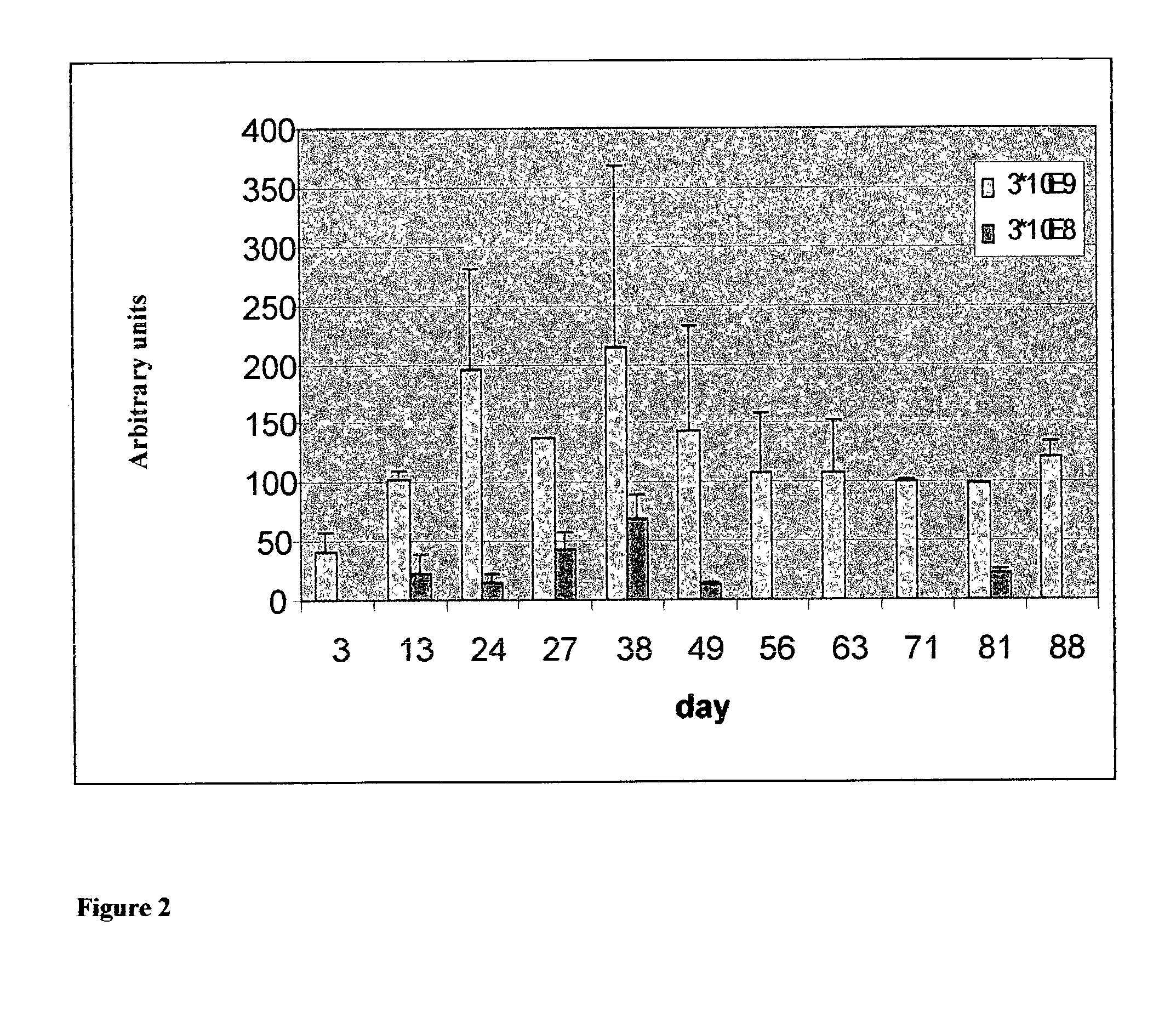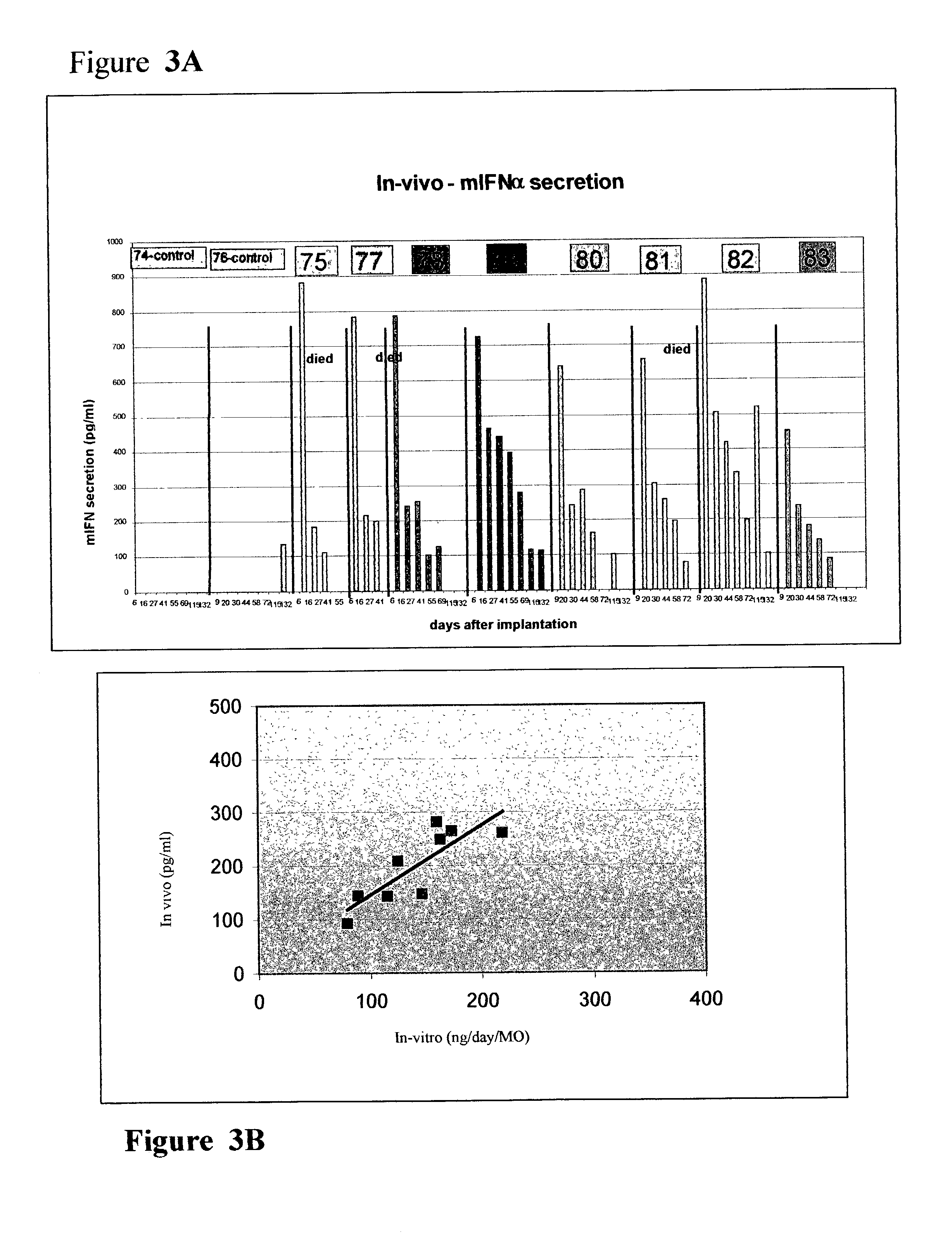Efficient methods for assessing and validating ecandidate protein-based therapeutic molecules encoded by nucleic acid sequences of interest
- Summary
- Abstract
- Description
- Claims
- Application Information
AI Technical Summary
Problems solved by technology
Method used
Image
Examples
example 1
[0230] In Vitro Micro-Organ Expression of Murine Erythropoietin
[0231] Material and Experimental Methods
[0232] Preparation of Human Skin Micro-Organs
[0233] Approval for experiments utilizing human skin was obtained from the Rambam Hospital, Israel, according to standards approved by the Helsinki committee. A section of 1.4-1.5 mm human female skin thickness (depth) was aseptically removed from the abdomen according to standard operating procedures. The biopsy tissue was treated with a hypochloride solution (10% Milton solution), for 7 minutes followed by 3 washes with 20 ml DMEM for 10 minutes each. Following treatment, the tissue was further sectioned with a tissue chopper (TC-2 chopper, Sorval, Du-pont instruments). Tissue sectioning into 300 .mu.m width explants was conducted under sterile conditions. The resulting micro-organs (MOs) were placed individually within wells of a 48-well micro-plate containing 400 .mu.l per well of DMEM (Biological Industries --Beit Haemek) in the abs...
example 2
[0251] In vivo Micro-Organ Expression of Murine Interferon-.alpha.
[0252] Material and Experimental Methods
[0253] Construct Preparation:
[0254] The commercially available vector comprising strain 5 of the adenovirus expressing murine interferon a off the cytomegaloviral promoter (designated Ad5-CMV / mIFN.alpha.) and a vector comprising strain 5 of the adenovirus expressing the .beta.-galactosidase gene, (designated Ad5-CMV / LacZ), used as a control, were both purchased from Q-Biogene (Carisbad, Calif., USA).
[0255] Ad5-CMV / mIFN .alpha. micro-organ implantation:
[0256] Male and female SCID mice weighing around 25 grams were anaesthetized with 140 ul of diluted Ketast (ketamine HCl) (400 .mu.l Ketast and 600 .mu.l saline) and Ad5-CMV / mIFN .alpha. expressing MOs were implanted subcutaneously, 14 days following MO transduction.
[0257] Assessment of in vitro Protein Production:
[0258] Media was removed from each well every 2-3 days and assayed via ELISA for the presence of secreted mIFN.alpha. (...
example 3
[0271] Implanted Microorgans Maintain Structural Integrity Over Time
[0272] Material and Experimental Methods
[0273] Preparation of Murine Lung Micro-Organs:
[0274] Entire lungs were removed from several C57B1 / 6 mice and then lower right or left lobes of the lungs were aseptically dissected. The tissue was further sectioned with a tissue chopper (TC-2 Tissue sectioning, Sorval Du-pont instruments) into 300 .mu.m width explants, under sterile conditions. The resulting micro-organs (MOs) were placed within wells of a 48-well micro-plate containing 400 .mu.l of DMEM (Biological Industries--Beit Haemek) in the absence of serum, per well, and incubated under a 5% CO2 atmosphere, at 37.degree. C. for 24 hours. Wells were visualized under a binocular (Nikon-SMZ 800) microscope and micro-organs were photographed, accordingly.
[0275] Experimental Results
[0276] MOs Maintain Macroscopic Integrity during Long-Term Sub-Cutaneous Implantation
[0277] Mouse lung MO's were prepared similarly to human ski...
PUM
| Property | Measurement | Unit |
|---|---|---|
| Length | aaaaa | aaaaa |
| Length | aaaaa | aaaaa |
| Time | aaaaa | aaaaa |
Abstract
Description
Claims
Application Information
 Login to View More
Login to View More - R&D
- Intellectual Property
- Life Sciences
- Materials
- Tech Scout
- Unparalleled Data Quality
- Higher Quality Content
- 60% Fewer Hallucinations
Browse by: Latest US Patents, China's latest patents, Technical Efficacy Thesaurus, Application Domain, Technology Topic, Popular Technical Reports.
© 2025 PatSnap. All rights reserved.Legal|Privacy policy|Modern Slavery Act Transparency Statement|Sitemap|About US| Contact US: help@patsnap.com



